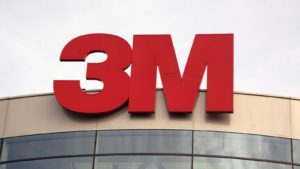Defining high-yield dividend stocks is an intriguing task. Some loosely define high-yield stocks as those with dividend yields exceeding key benchmarks like the S&P 500 (1.5%) or a 10-year U.S. Treasury note (4.1%). For over a century, dividends played a crucial role in stock returns. Despite this fact, not all dividend stocks prove to be worthwhile investments. Indeed, many high-yield stocks underperformed markets and government bonds over longer time horizons.
Today, many investors focus on sustainability and reliability over all else. Companies with reliable cash flow and growth potential are in high demand. Higher yields can mean higher risk (particularly of dividend cuts). Accordingly, making a list of top high-yielding dividend stocks can result in increasing one’s risk profile, something investors don’t want.
Let’s focus on three higher-yielding dividend stocks that can be viewed as relatively stable in this current market environment.
Devon Energy (DVN)

Devon Energy (NYSE:DVN) saw a 26% stock drop in the past year, which resulted in a 1.8% dividend yield. Notably, Devon is an outlier in the energy sector, with a strong history of 18 payouts.
Highlighting its resilience is the company’s 22.74% five-year dividend growth rate, among the best in the sector. Thus, it should be no surprise that Devon continues to be a focal point of many income investors. In particular, the company’s recent Q3 earnings results exceeded expectations.
Despite Devon’s stock drop in 2023, optimism for a 2024 recovery abounds. The company’s earnings, cash flow, and dividends suffered due to a decline in crude prices. However, with prices stabilizing around $70 a barrel, the company’s 5% dividend yield is sustainable.
Mordor Intelligence reports the U.S. upstream market produced 12.4 million barrels per day, with a projected 2.3% CAGR through 2028. Despite electrification trends, the world’s reliance on oil, especially in sectors like air transportation, positions Devon as a compelling stock. The 22% loss investors saw over the past year may not fully account for this company’s long-term relevance. Analysts express optimism, rating DVN a moderate buy with a $56.28 average price target.
AT&T (T)

AT&T’s (NYSE:T) stock, down 18.4% over the past year, is a company that provides contrast, given its robust business performance. Mobile and broadband services show steady growth, with a 5G network covering 200 million Americans. Notably, the company’s third-quarter 2023 results showcased record-high mobility service revenue. These will be key areas investors will continue to focus on moving forward.
AT&T’s broadband business has surpassed its mobility business, now doubling AT&T Fiber subscribers in less than four years. With new services and plans to cover over 30 million locations by 2025, 2024 could see accelerated broadband growth.
Despite the telecom company’s strong performance, the stock trades at 6.2-times trailing free cash flow, offering a substantial 6.7% dividend yield. With a projected $16.5 billion free cash flow in 2023 and a target net debt to adjusted EBITDA ratio of 2.5x by mid-2025, AT&T shows financial strength. On track to achieve the 2.5-times ratio by Q2 2024 (a year earlier than expected) AT&T faces challenges but remains promising. Amid the resurgence of the 5G theme, AT&T is poised for potential growth.
3M Co. (MMM)

3M (NYSE:MMM) flaunts a 5.49% forward dividend yield, sustaining progressive dividends for 65 years. Operating margins improved company-wide, notably in safety and industrial segments, achieving 25.7% in Q3 2023.
The company’s high-yield payout raises concerns due to legal issues. Settlements last year, totaling $16.3 billion for earplugs and “forever chemicals,” will be paid over several years. Despite improved financial results, credit ratings were affected. S&P Global downgraded to BBB+, while Moody’s maintained an A2 rating with a negative outlook.
3M’s adjusted free cash flow of $4.3 billion in Q3 2023 covered its $2.5 billion dividend payments, allowing for balance sheet strengthening. Additionally, the company’s net debt decreased by 11% to $10.8 billion in the past year. Thus, 3M is trending in the right direction. Despite likely being the highest-risk pick on this list, it’s a stock worthy of attention right now.
On the date of publication, Chris MacDonald did not have (either directly or indirectly) any positions in the securities mentioned in this article. The opinions expressed in this article are those of the writer, subject to the InvestorPlace.com Publishing Guidelines.

